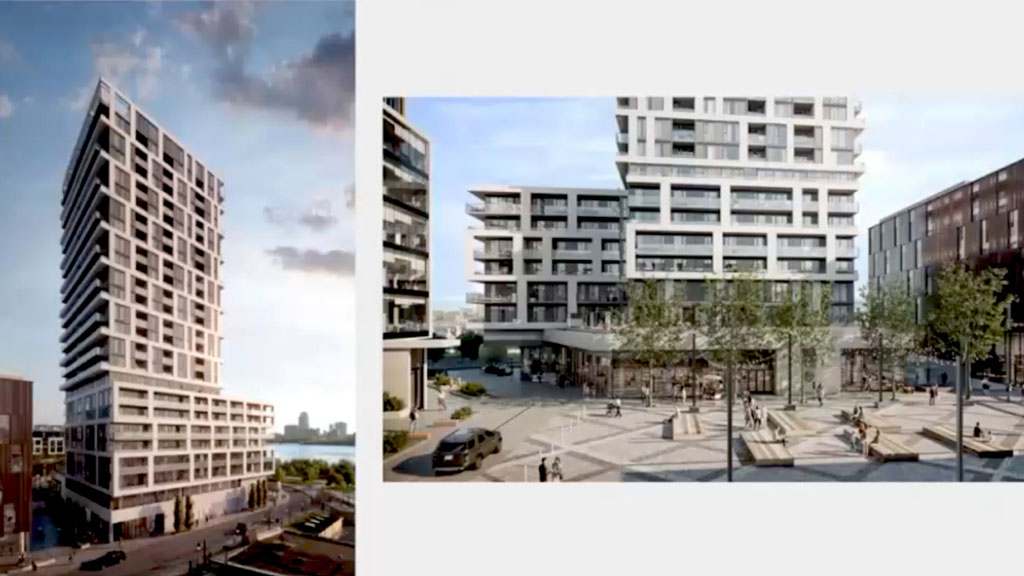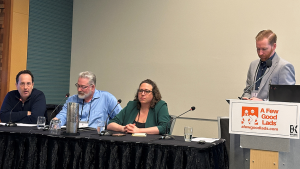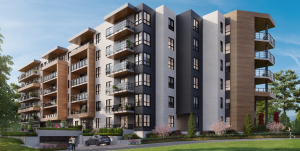Delivering affordable housing is an urgent issue across ºÚÁϳԹÏÍø, yet there are examples of successful projects that may provide some insight.
So what are the driving factors that make those projects succeed and how can they be replicated?
Four affordable housing projects were featured during the Leveraging Examples of Successful Partnership Models session at the Scotiabank Affordable Housing Summit held virtually recently.
According to Bruce Irvine, manager of affordable housing with the City of Calgary, perseverance and confluence of interests by all parties is key.
âI think every partner needs to recognize what they bring to the table,â said Irvine. âHow do you start early? How do you be proactive and how do you start with everybody together including all three levels of government?â
Part of what slows down the process is getting everyone on board at the same time, he added.
âI think there has been tremendous progress recentlyâ¦but we still see ghosts of some old behaviours,â said Irvine. âEvery single partner wants to be the last in. They want everything else wrapped up and then they come in at the end.â
He explained itâs important to get everyone on board early to identify what each of their needs are as well as share some of the risks together.
As an example he discussed a project between the City of Calgary and HomeSpace which purchased the 10-storey, 100,000-square-foot Sierra Place building, a vacant office tower downtown. The building was retrofitted and now includes over 80 units of affordable housing, in addition to providing new retail, office and shelter space.
âIn the end, that resulted in a 20-day development permit, yes 20 days,â Irvine said, adding the development is anticipated to reinvigorate the downtown core. âThe city offered $5.5 million being the first government in and that really got the ball rolling.â
Peter Zimmerman, senior housing development director with the Toronto Community Housing Corporation, talked about the Regent Park revitalization project in Toronto. He said what made the project successful was the convergence of necessity and opportunity.
âWe create a deal structure where there is a strong alignment of interests with us and our private partners,â Zimmerman noted. âOur goal is to harness the expertise and motivation of private developers for the public interest.â
Craig Watters, senior vice-president of development with Concert Properties, discussed a master planned community Heart of Burquitlam, a neighbourhood in Coquitlam, B.C. which includes a 31-storey purpose-built rental building with 100 non-market rental suites.
He said the team wouldnât have been able to achieve the depth of affordability or the scale of housing without strong partnerships and commitments.
âDelivering almost a third of the homes in the building at below market rates was only possible through the participation of all levels of government including the city, the province, the federal government and our non-profit partner,â Watters said.
At the centre of the community plan is a 55,000-square-foot YMCA.
âThe lens in which the development is taking place was the result of a creative property exchange between ourselves and the city,â he noted. âWe engaged in a lengthy collaborative design exercise with the city and the Y to arrive at the plan.â
Justin Robitaille, vice-president of development with DREAM, discussed the Zibi project, a 34-acre waterfront community situated on the Ottawa river straddling both the city of Ottawa and Gatineau.
It is one of the largest urban redevelopment opportunities in the national capital region, and is slated to be one of the most environmentally conscious and sustainable communities in the country.
âAs a part of the initial master plan weâve committed to seven per cent of the units within the development as being affordable through a mixture of housing typologies that really promote this inclusive community,â said Robitaille.
They partnered with a not-for-profit affordable housing operator to develop a 25-storey, 207-unit rental building.
âWeâve also introduced some fully furnished three-, four-, and five-bedroom suites here where tenants can rent individual rooms and benefit from shared large communal living space,â explained Robitaille, adding this was a novel concept in the city and there were no policies in place at the municipal level to address it.
âYou really need a champion in some cases to really be able to get any kind of reward for bringing some creative ideas to the table. In fact, some of that creativity can even stifle project progress in some cases.â
All the panellists pointed to the lengthy development approvals process as a major barrier to getting affordable housing built.
âAt the end of the day we all need to act with urgency, everyone in the industry,â Robitaille said.
âWe need the participation and co-ordination of all levels of government along with leveraging the private and non-private sectors. We also need, quite frankly, municipalities need to streamline their development approvals processes. We need a shorter timeline to put more supply in the marketplace.â
Follow the author on Twitter .











Recent Comments
comments for this post are closed